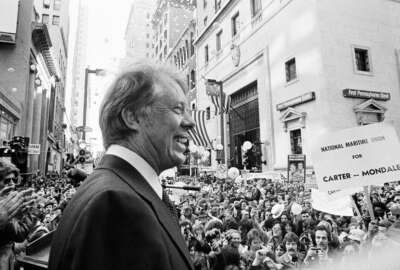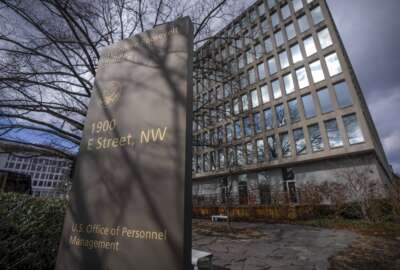Size of the federal workforce dips as number of new hires tumbles
Federal hiring declined last year, with new government hires dropping to fewer than 90,000 in fiscal 2012. The dip in hiring caused the size of the federal...
Federal hiring declined last year, with new government hires dropping to fewer than 90,000 in fiscal 2012.
The dip in hiring caused the size of the federal workforce to retract slightly to about 2.1 million federal workers — about on par with 2009 levels, according to new government data compiled by the Partnership for Public Service.
Overall, over the past four years, federal hiring has slackened noticeably.
The 89,689 new employees hired governmentwide in 2012 is a 37 percent decrease from what it was in 2009, when hiring peaked at more than 145,000 new hires. Hiring has dropped every year since then.
The number of employees who left federal service, including through retirements, conversely has been on an upswing since 2009. In fiscal 2012, more than 100,000 employees left the government.
Hiring in 2012 was driven by staffing increases at a handful of defense and security-related agencies, according to the data. More than 77 percent of the new hires were brought in by the Defense Department, military branches or agencies such as the Justice and Homeland Security departments.
But most federal agencies drew back on hiring. Out of 39 medium and large agencies — defined as those with 1,000 or more employees — 26 hired fewer employees in fiscal 2012 than they did the previous year.
(Story continues below chart)

Feds hiring younger, more educated workers
Concern that the government is falling behind in attracting younger workers have long dogged federal hiring efforts. But the data points to a more promising sign.
More than 42 percent of new hires in fiscal 2012 were under the age of 35, while that same age-cohort makes up a little less than 18 percent of the total federal workforce.
New hires with higher levels of education are also coming to the government. According to the data, 18.6 percent of federal hires in 2012 had an advanced degree — a masters or doctorate degree — compared to 15.9 percent of workers in the total federal workforce with such degrees.
However, the data show mixed results on Obama administration efforts to increase the hiring of minorities and veterans.
The racial composition of new hires generally aligned with the racial composition of the existing federal workforce, with some notable gaps.
African American employees constituted 16.9 percent of the federal workforce, but only 15.9 of new hires in 2011 (the most recent year with data available). Similarly Latino federal employees made up 8.1 percent of the federal workforce in 2012, but only 5.2 percent of new hires.
On the other hand, a 2009 executive order mandating agencies to up their hiring of veterans appears to be bearing fruit.
In fiscal 2011, veterans made up more than 44 percent of new hires, while veterans make up 29.2 percent of the total federal workforce. The federal government also hires a greater percentage of veterans — across various categories — than the private sector.
In 2011, the government hired three times as many veterans as the private sector and 10 times the number of severely injured veterans as the private sector.
RELATED STORIES
White House orders increase in diversity hiring
Agencies finalize diversity plans
Hiring reforms thriving despite freezes, early outs
Copyright © 2025 Federal News Network. All rights reserved. This website is not intended for users located within the European Economic Area.





